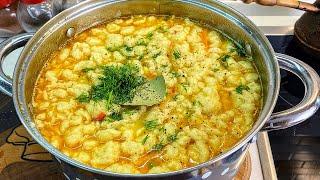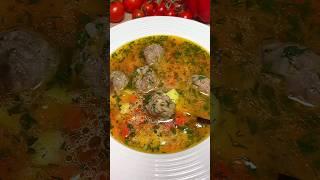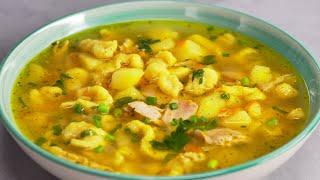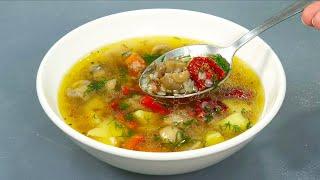Super easy, healthy, nutritious, lentil buns without yeast, eggs, baking soda and baking powder. These buns are perfect for breakfast, tiffin, evening snacks or kids lunch boxes.
Ingredients:
1/2 cup lentil (wash and soak for 8 hours)
2 tbsp psyllium husk
1 tsp salt and other seasoning of your choice
3 tbsp sourdough starter.
Mix everything and let it rest overnight. Next day roll them and sprinkle with some seeds (optional). Bake them at 190 degrees for 12 minutes.
Lentils and beans are edible legumes that belong to the family of Fabaceae. They are small, lens-shaped seeds that come in various colors, including brown, green, black, and red. Lentils have been cultivated for thousands of years and are a staple food in many cultures around the world.
Here are some key points about lentils:
Nutritional Value: Lentils are highly nutritious and a good source of protein, dietary fiber, complex carbohydrates, vitamins, and minerals. They are particularly rich in folate, iron, potassium, and magnesium. Lentils are also low in fat and calories, making them a healthy addition to a balanced diet.
Health Benefits: Lentils offer numerous health benefits. The high fiber content promotes digestive health and helps regulate blood sugar levels. The protein in lentils is essential for muscle growth and repair. Additionally, lentils may aid in weight management, reduce the risk of heart disease, and improve overall gut health.
Culinary Uses: Lentils are versatile and can be used in a variety of dishes. They cook relatively quickly compared to other legumes and have a mild, earthy flavor. Lentils are commonly used in soups, stews, curries, salads, and side dishes. They can also be ground into flour to make bread or used as a meat substitute in vegetarian or vegan recipes.
Types of Lentils: There are several different types of lentils, each with its own characteristics and culinary uses. Some common varieties include:
Brown Lentils: These are the most widely available lentils and hold their shape well when cooked. They have a slightly earthy flavor and are commonly used in soups, stews, and salads.
Green Lentils: Green lentils have a slightly peppery taste and hold their shape even after cooking. They are often used in salads, side dishes, and hearty vegetarian meals.
Red Lentils: These lentils cook quickly and tend to become soft and mushy when cooked. They have a slightly sweet, nutty flavor and are commonly used in soups, stews, and Indian dal recipes.
Black Lentils: Also known as beluga lentils due to their resemblance to caviar, black lentils hold their shape when cooked and have a rich, earthy flavor. They are often used in salads or as a side dish.
Preparation: Before cooking lentils, it's advisable to rinse them thoroughly and soak them for the least 4 hours. If time allows prefer soaking them overnight or for 8 hours. You can also sprout them for better digestion and nutrient assimilation. Lentils generally require cooking with water or broth until tender. The cooking time varies depending on the type of lentils, with red lentils cooking the fastest and green or brown lentils taking longer.
In conclusion, lentils are highly nutritious, versatile, and widely used legumes. They provide numerous health benefits and are a valuable addition to a balanced diet. Whether you enjoy them in soups, salads, or other dishes, lentils are a great source of plant-based protein, fiber, and essential nutrients.
Ingredients:
1/2 cup lentil (wash and soak for 8 hours)
2 tbsp psyllium husk
1 tsp salt and other seasoning of your choice
3 tbsp sourdough starter.
Mix everything and let it rest overnight. Next day roll them and sprinkle with some seeds (optional). Bake them at 190 degrees for 12 minutes.
Lentils and beans are edible legumes that belong to the family of Fabaceae. They are small, lens-shaped seeds that come in various colors, including brown, green, black, and red. Lentils have been cultivated for thousands of years and are a staple food in many cultures around the world.
Here are some key points about lentils:
Nutritional Value: Lentils are highly nutritious and a good source of protein, dietary fiber, complex carbohydrates, vitamins, and minerals. They are particularly rich in folate, iron, potassium, and magnesium. Lentils are also low in fat and calories, making them a healthy addition to a balanced diet.
Health Benefits: Lentils offer numerous health benefits. The high fiber content promotes digestive health and helps regulate blood sugar levels. The protein in lentils is essential for muscle growth and repair. Additionally, lentils may aid in weight management, reduce the risk of heart disease, and improve overall gut health.
Culinary Uses: Lentils are versatile and can be used in a variety of dishes. They cook relatively quickly compared to other legumes and have a mild, earthy flavor. Lentils are commonly used in soups, stews, curries, salads, and side dishes. They can also be ground into flour to make bread or used as a meat substitute in vegetarian or vegan recipes.
Types of Lentils: There are several different types of lentils, each with its own characteristics and culinary uses. Some common varieties include:
Brown Lentils: These are the most widely available lentils and hold their shape well when cooked. They have a slightly earthy flavor and are commonly used in soups, stews, and salads.
Green Lentils: Green lentils have a slightly peppery taste and hold their shape even after cooking. They are often used in salads, side dishes, and hearty vegetarian meals.
Red Lentils: These lentils cook quickly and tend to become soft and mushy when cooked. They have a slightly sweet, nutty flavor and are commonly used in soups, stews, and Indian dal recipes.
Black Lentils: Also known as beluga lentils due to their resemblance to caviar, black lentils hold their shape when cooked and have a rich, earthy flavor. They are often used in salads or as a side dish.
Preparation: Before cooking lentils, it's advisable to rinse them thoroughly and soak them for the least 4 hours. If time allows prefer soaking them overnight or for 8 hours. You can also sprout them for better digestion and nutrient assimilation. Lentils generally require cooking with water or broth until tender. The cooking time varies depending on the type of lentils, with red lentils cooking the fastest and green or brown lentils taking longer.
In conclusion, lentils are highly nutritious, versatile, and widely used legumes. They provide numerous health benefits and are a valuable addition to a balanced diet. Whether you enjoy them in soups, salads, or other dishes, lentils are a great source of plant-based protein, fiber, and essential nutrients.
- Категория
- веганские блюда
Комментариев нет.













